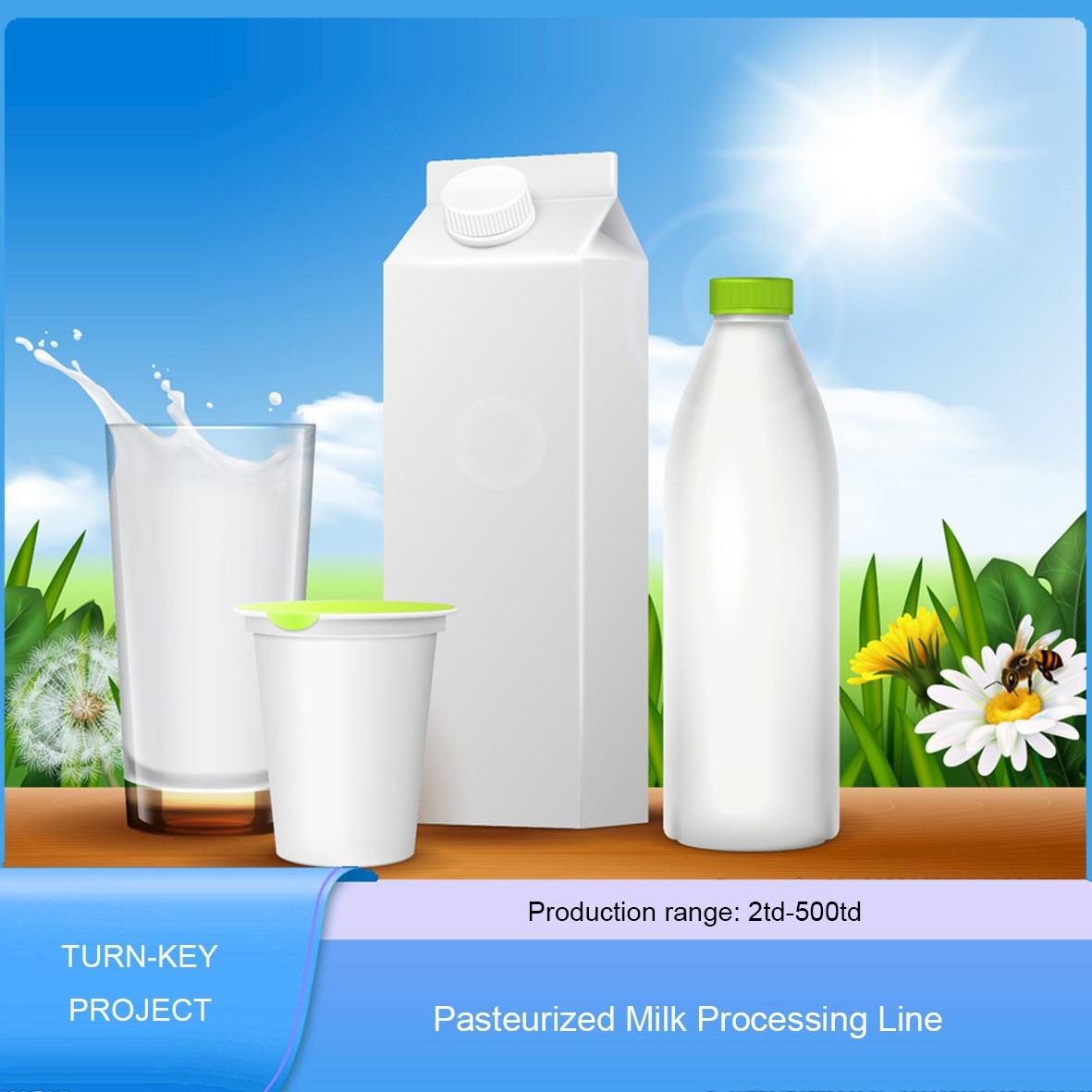






harmful bacteria in milk and preserve nutrients and pure taste.


Production line introduction:
After centrifugation, standardization, homogenization, sterilization and cooling, the whole process is seamless. This production line project,
customers can choose to do UHT high temperature milk, pasteurized milk, lactic acid bacteria drinks, yogurt drinks, etc.
The packaging is diversified and can be customized according to the demand.
This milk production line produces several types of pasteurized milk products, i.e. whole milk, skimmed milk and standardized milk of various fat contents.
First the milk is preheated and standardized by in line milk fat standardization system. The purpose of standardization is to give the milk a defined, guaranteed fat content.
Common values are 1.5% for low fat milk and 3% for regular grade milk, fat contents as low as 0.1 and 0.5 % is skimmed milk.
Then the standardized milk is homogenized. The purpose of homogenization is to disintegrate or finely distribute the fat globules in the milk in order to reduce creaming.
Homogenization may be total or partial. Partial homogenization is a more economical solution, because a smaller homogenizer can be used.
The milk now is pumped to the heating section of the milk heat exchanger where it is pasteurized. The necessary holding time is provided by a separate holding tube.
The pasteurization temperature is recorded continuously. Pump is a booster pump which increases the pressure of the product to a level at which the pasteurized product
cannot be contaminated by untreated milk or by the cooling medium if a leak occur in the plate heat exchanger. If the pasteurization temperature should drop,
this is sensed by a temperature transmitter. A signal activates flow diversion valve and the milk flows back to the balance tank.
After pasteurization the milk continues to a cooling section in the heat exchanger, where it is regeneratively cooled by the incoming untreated cold milk, and then to the cooling section
where it is cooled with ice water. The cold milk is then pumped to the filling machines.
Temperature and pasteurization holding time are very important factors which must be specified precisely in relation to the quality of the milk and its shelf life requirements.
The pasteurization temperature is usually 72 – 75C for 15 – 20 sec. A common requirement is that the heat treatment must guarantee
the destruction of unwanted microorganisms and of all pathogenic bacteria without the product being damaged.
Milk tank
CIP cleaning system